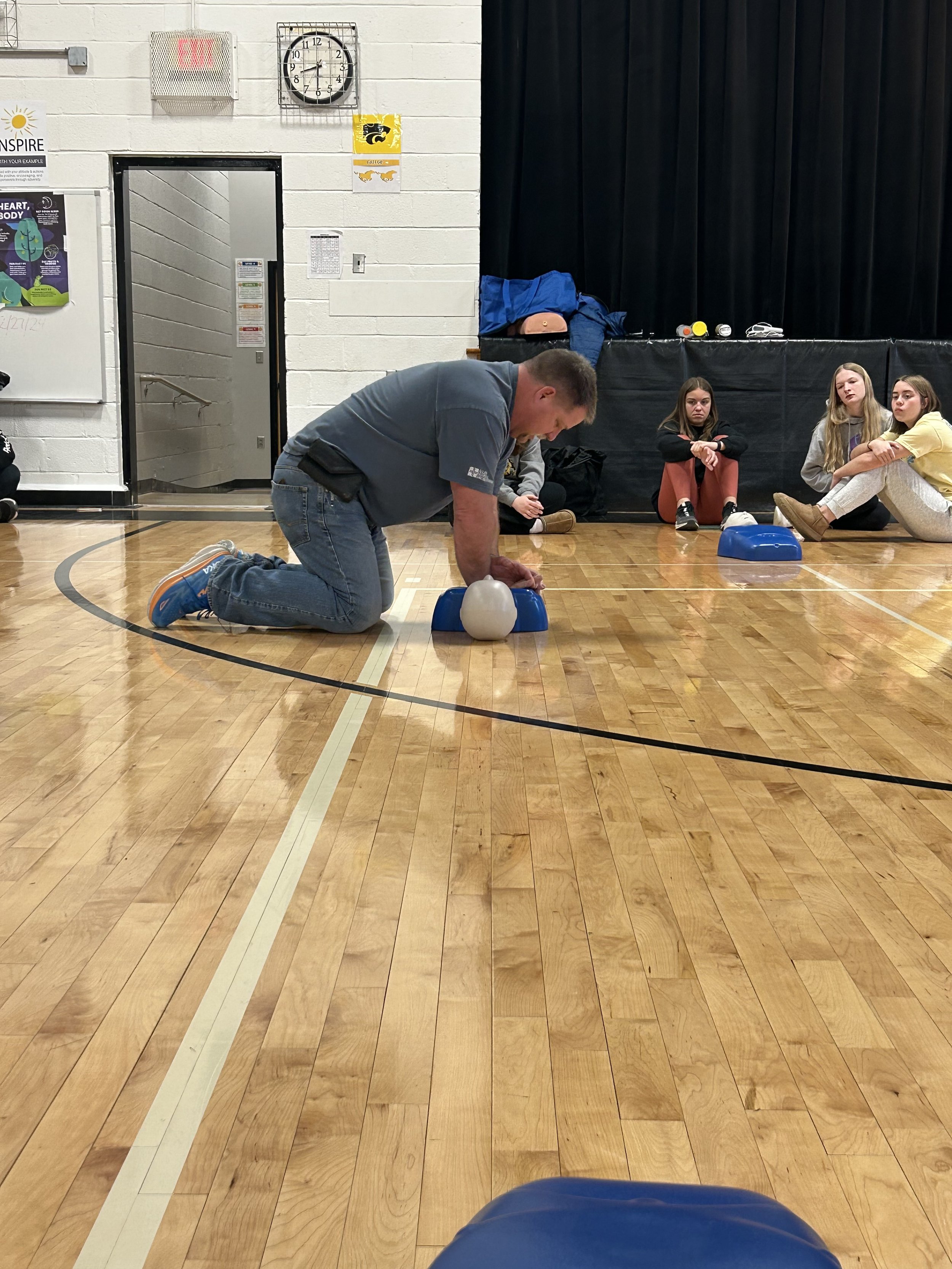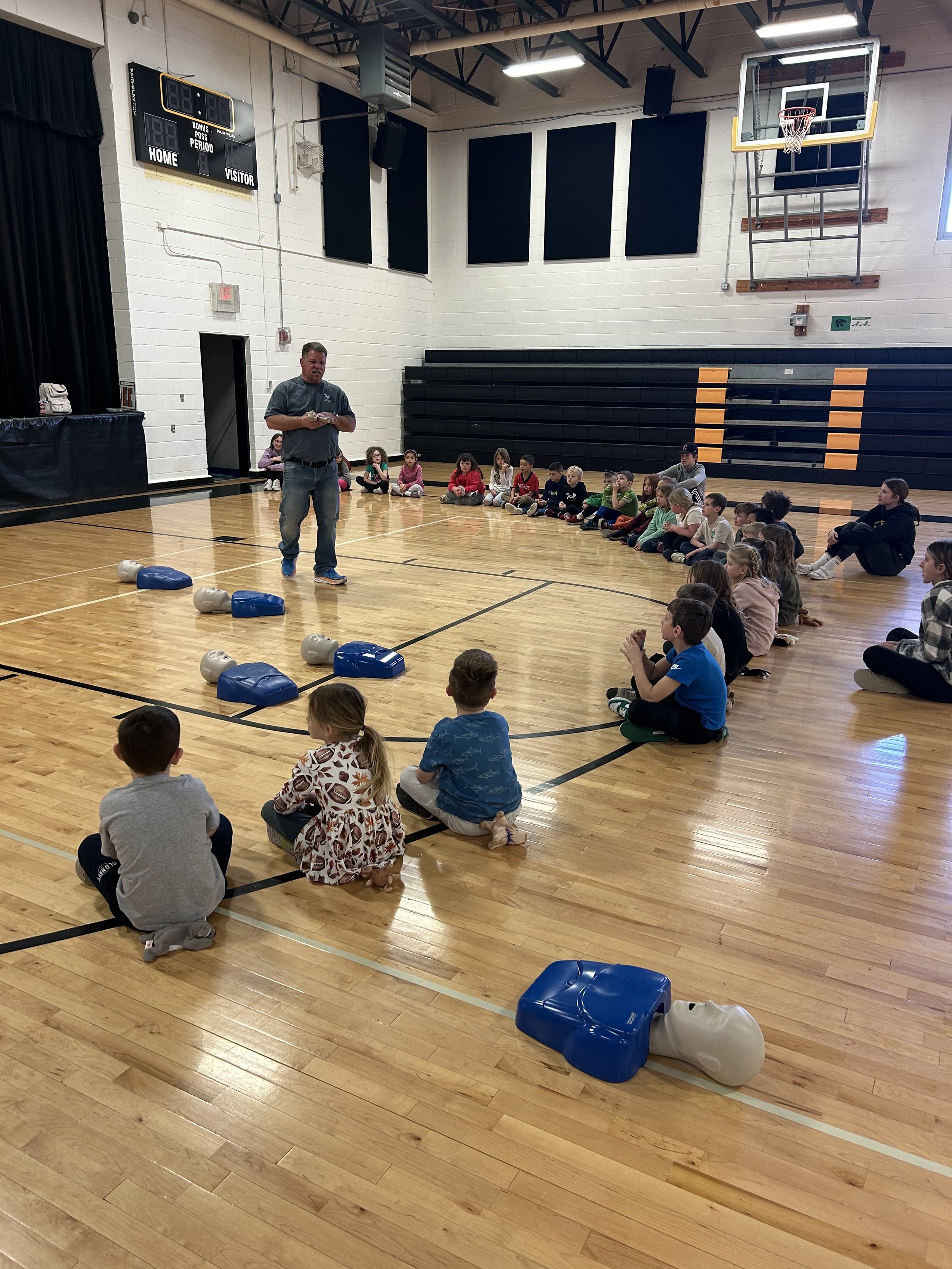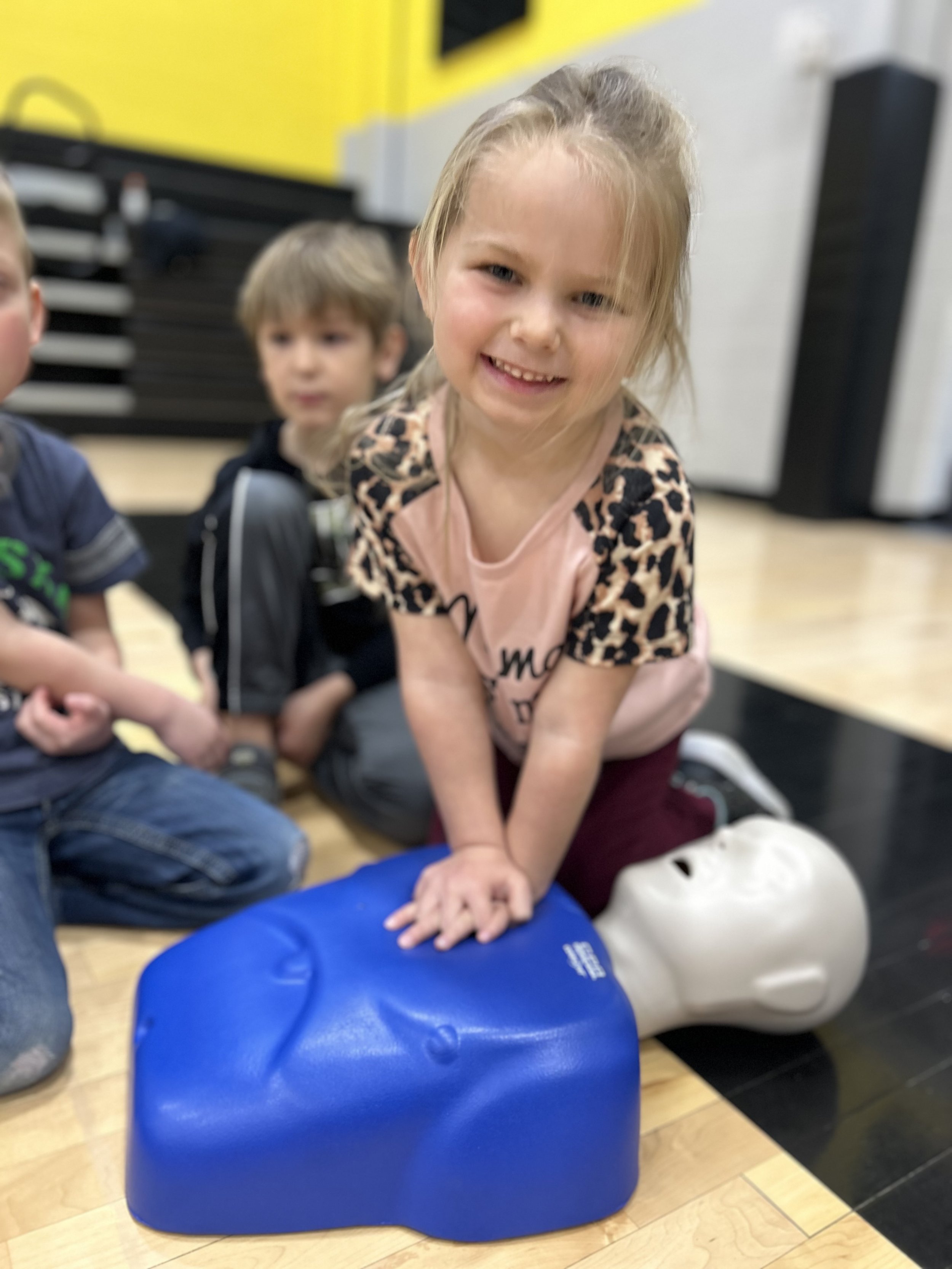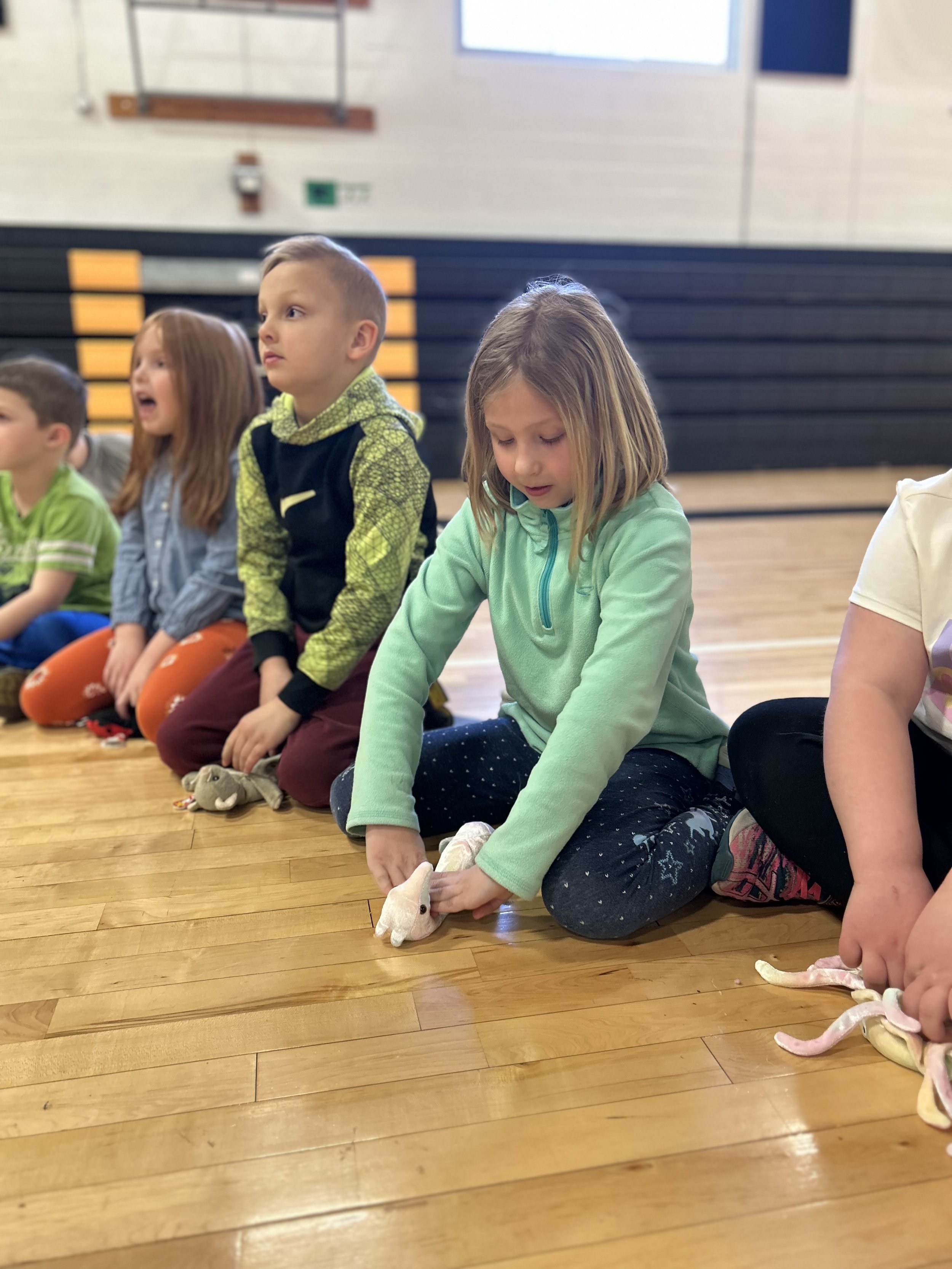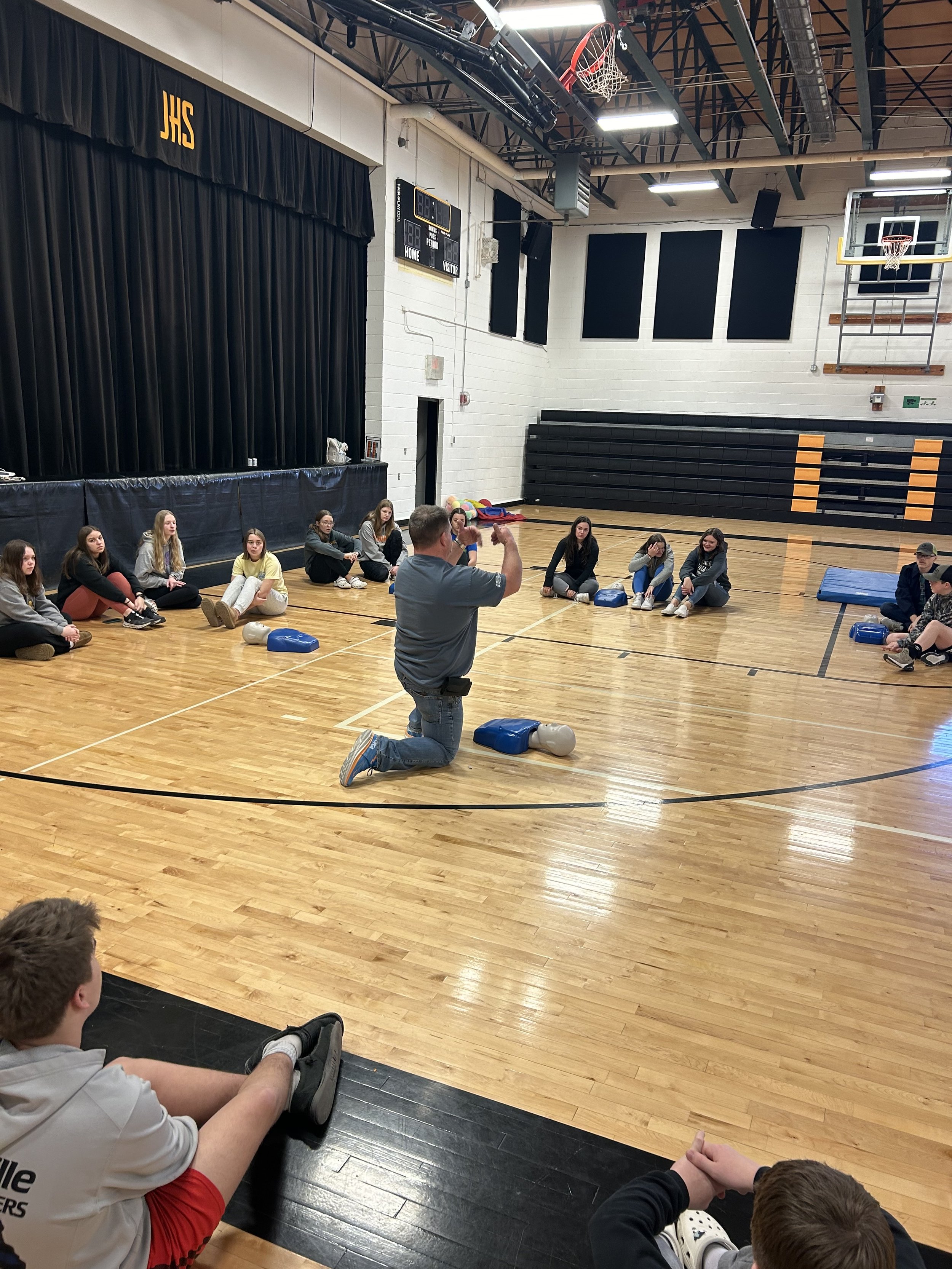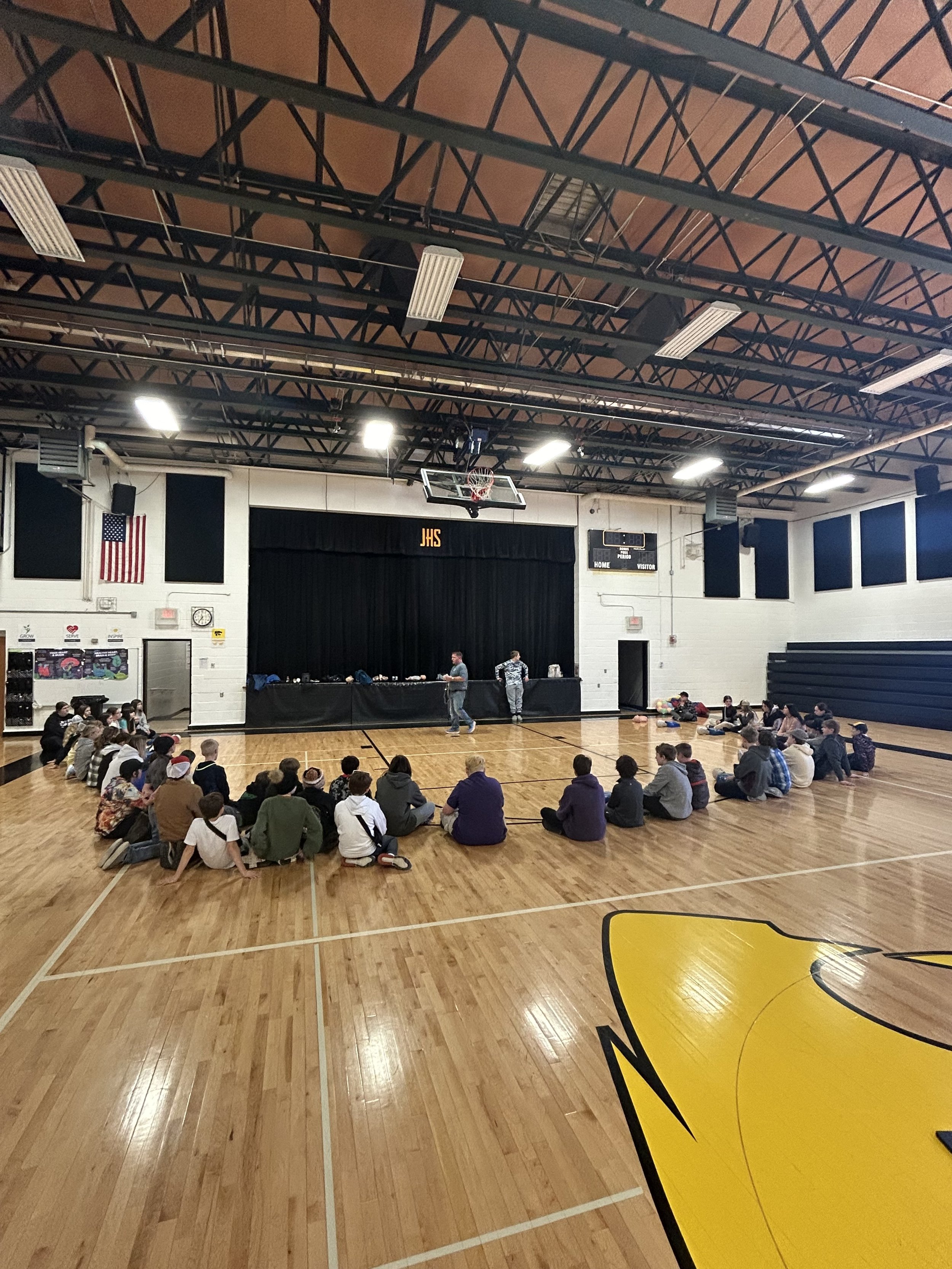Children of All Ages Learn CPR
/According to the American Heart Association, “kids as young as nine can learn basic steps of CPR. It can double the survival rate from out-of-hospital cardiac arrest.” By teaching students how to perform CPR, we are creating the next generation of responsible citizens who can provide life-saving measures in an emergency. This can help to make our communities safer and more prepared for emergencies.
This week, K-12 students at JCSD learned Hands-Only CPR during their physical education and health classes. Hands-Only CPR is CPR without mouth-to-mouth breaths. It is faster and easier to learn than traditional CPR. It's also less exhausting and less intimidating for people who may be hesitant to provide mouth-to-mouth resuscitation.
CPR instructor, Chris Charley, taught each class how to administer compressions. K-2 students practiced with beanie babies first so the dummies weren’t so scary. Other safety protocols were covered as well. Topics include how to call 911, how to use the teacher’s key fob in order to enter the building, where the AEDs are located, and what an EpiPen is and how to use it.
Combining CPR training with an understanding of emergency situations equips students with the ability to critically evaluate emergencies and act decisively, potentially saving lives.


